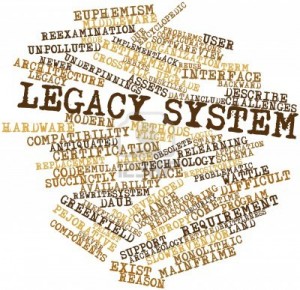 Legacy systems are old technology components. They are usually computer systems that were implemented long in the past, but are still currently in use. In spite of the fact that there are several other systems that have been developed that out shine the current system, legacy systems are still heavily relied upon.
Legacy systems are old technology components. They are usually computer systems that were implemented long in the past, but are still currently in use. In spite of the fact that there are several other systems that have been developed that out shine the current system, legacy systems are still heavily relied upon.
Legacy systems support institutions such as banks, air traffic control in airports, nuclear power plants, military facilities and even the United States NASA Space Shuttle program. There are several reasons why the users of these legacy systems still continue to use them. For starters, if the user feels that the system adequately meets their requirements then they employ the adage “Do not fix what’s not broken.”
The amount of capital, human working hours, and effort required to introduce a new system is a lot. Therefore, the argument to bring in entirely new systems that the current legacy systems can already tackle is not very compelling. It would cost the organization an arm and a leg. Even the seemingly simple task of redesigning the legacy systems is gargantuan in nature.
Another explanation why legacy systems still thrive is that they eliminate the need for re-training staff. Should the new systems that replace the current legacy systems be implemented successfully, they will still need users to make use of them. Therefore, should the new system be different (and it inevitably will be) in any way, it would require an organization wide retraining exercise, to ensure that they are oriented to use it.
The legacy systems are used in nearly every industry to run the core business operations of the organization. They are always online and thus cannot be put out of commission even for a while. The responsibilities they bear require that legacy systems be always working, and working well. For that reason, implementation of a second system to replace a legacy system becomes another gargantuan effort. The implications of it being offline are almost unacceptable.
Legacy systems usually come before the generation that is currently using them. So, it usually turns out that the legacy systems’ creators are already retired or deceased. So in turn are the complete workings. Therefore despite having some information on the legacy systems, there will be some gray areas that cannot be defined. Without understanding the complete workings of the legacy systems, no respectable developer would attempt to replace or redesign the system. It also curbs the belief from users that should there be any shortcomings with the new system, that it can easily be replaced as soon as they become apparent. This would create dissatisfaction among the users, when the organization’s heads explain that it would cost too much. They may believe that if it was replaced once, it can be replaced again, at the drop of a hat.
